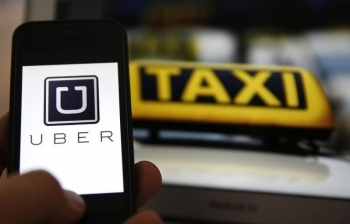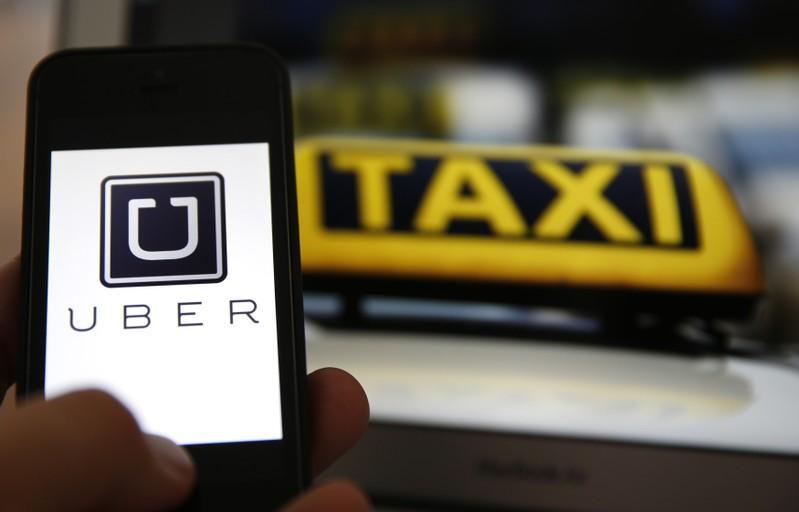
.png) Jaswant Kaur
Jaswant Kaur

Are you stepping out for the first time after a long period? Are you thinking of hiring an Uber or Ola car for travelling a long distance, maybe from one corner of the city to another? Well, things are no longer the same. You may get one only after several attempts. In fact, you may have to change the service app too.
I have experienced this several times. The moment you book a cab, the driver will call you to find out the location, as it is not visible unless he keys in the one-time password (OTP) given by you, for which he will have to accept the ride. In case the location is not suitable for him, you will see a message on the screen that the app is trying to connect you to another driver.
And if this happens more than three or four times, the app may say that they are unable to serve you at this moment. This will happen several times unless you find a driver who is willing to travel long distances. In case you are lucky enough to find one!
After experiencing this many times, I asked an Uber driver about the issue. “Madam, 250 rupaiye mein se 150 petrol pe hi kharach kar denge to kya kamayenge hum. Petrol itna mehenga ho gaya hai. Company incentive bhi nhi deti hai. Kam se kam apni marji se gaari to chala sakte hain. (Madam, petrol prices have gone up. Of the Rs. 250 we get for a trip, if we have to spend Rs.150 on petrol, what will we earn? The company does not give any incentive too. So, drivers generally choose to pick up those rides which suit them.).
With this, the driver gave me a business card. “Kahin jana ho to batayega. Sath mein apna kaam karna parta hai nahi to gaari ki kisht kaise niklegi,” (Please let me know if you wish to travel anywhere. One has to do a side-business to ensure that the vehicle’s EMI is paid on time), he added.
A service that had become very popular during the pre-pandemic period, both for the riders and the drivers, is no longer available at the click of a button. What has made it so difficult to use?
So is the case with Swiggy or any other food delivery app. You might have found delivery executives using bicycles or even delivering food by foot. This was not seen before the pandemic. The condition of these delivery executives is pathetic. They no longer receive the kind of benefits they used to get before the pandemic. Not only this, after a few years of continuous service, they develop serious health issues. So much so, a majority of them remain hardly fit for any other job.
In fact, they have to remain online at all times. That guaranteed-30-minute delivery that you often receive may actually be really harsh on the delivery executive. In case he gets late by a few minutes, he may not only get a warning notice but also lose his job the third time he does so!
Unlike employees of other organisations, they hardly have any social security. They are employed as service providers. In fact, they are described as delivery partners. But are they really partners? Partnership in common parlance is done to have an equal working relationship where the contracting parties have a say over the way they are treated in a contractual agreement.
The fancy words like delivery partner may look attractive on the face of it. But in reality, it is a taxing job. The delivery partners are no way close to being called a partner. The tag of independence associated with such work is superficial too. To earn a small incentive of a few hundred bucks, the delivery partner is expected to deliver at least 15 to 16 orders in a day.
A study published by the Tata Institute of Social Sciences lays bare the incentive story. A quote from a delivery partner is worth mentioning. “A 24-year-old delivery partner reported not getting any orders once his work reached the delivered amount of Rs. 960, to get incentive he had to reach 1000. As a result, he ended up investing more time on work to get the incentive amount of Rs 250, which eventually went in vain”.
The study reveals that many join such food delivery apps on a part-time basis. However, they end up working for more hours. In fact, 39 per cent of the part-time delivery partners work from five to eight hours in a day, which is equivalent to a full-time job in the formal sector. A large majority i.e., 42 per cent work for more than 12 hours a day! How can this be termed as a part-time job? The number of people working on a part-time basis (within the defined definition of a part-time job) is only 19 per cent.
The study also shows that 66 per cent of the respondents did not have any kind of job before joining such platforms. Around 60 per cent of the delivery partners do not take any leave and work throughout the week. Now from where do such working conditions comply with the ILO standards or even the local labour law? The answer is: they cannot be termed as labour or workers or employees. Hence from where did this question arise? Well, this is how such platforms evade law in the name of freedom and partnership.
An interesting observation is about the educational qualifications of the partners. The percentage of those having matriculation is almost the same as that of graduates! Does it not reflect upon the employment status of our youth? Will India be ever able to leverage its demographic dividend when its youth will be forced to enter the gig-economy for making a living? Will we ever be able to have fair working conditions for people coming from low socio-economic backgrounds?
In fact, the majority of these delivery partners or drivers are not eligible for welfare schemes like the public distribution system. The fact that they own a vehicle, even if it is a mortgaged one, make them ineligible for several schemes.
Such questions have been asked several times but have remained unanswered. The recently announced code on social security 2020 for the first time recognised the term platform workers and made them eligible for social security benefits.
However, a plethora of exceptions and complicated eligibility criteria will only hamper the main purpose. They have not been considered as employees hence depriving them of many benefits. Not only this, the code fails to uphold the accountability of gig platform owners towards their so-called delivery partners except for making it mandatory for these platforms to contribute towards the gig worker’s social security board.
Other labour codes do not even mention platform workers excluding them from the benefit of minimum wages, occupational safety and decent work.
The country’s skill development paraphernalia that would have created better jobs for the youth is plagued with several issues. One, the curriculum is not linked with industry requirements. No wonder that only close to a quarter of the youth who graduate out of ITIs are employable! Two, the focus is more on classroom learning than dual system of training (DST) where students are given the flexibility to split their time between industrial training and classroom learning. Three, even after completing their courses, youth passing out of the ITIs hardly get any job.
In such a situation, youth is left with no other option to find a job that can be easily found. So be it a high school pass out or a graduate, gig economy offers some sort of solace in terms of monetary income. It is a different matter that the entire system works for the benefit of gig platforms than the job seekers! It is a pity that a country like India does not have any vision to utilise its demographic dividend.
In fact, the central minister of state for labour and employment said that five all-India surveys are being conducted for preparing a National Employment Policy (NEP). The announcement was made in February 2021. A roadmap for NEP was expected to be ready by December 2021. However, the government has not even formed a committee for devising the policy. Not only this, the government has not notified the rules for the new labour codes, which were passed during September 2020. More than a year and a half has already passed.
No wonder, gig platform companies are only trying to repackage the informal sector that long existed in the Indian economy. It becomes easier when the powers-that-be have been constantly pushing the issue under the carpet.
Meanwhile, it seems public transport will be a better choice than using Ola or Uber unless these platforms revisit their policies for making it favourable for both drivers and the riders.
(The writer, a company secretary, can be reached at jassi.rai@gmail.com)